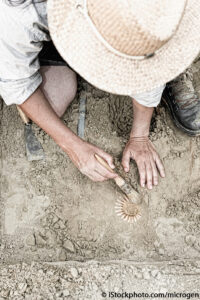
Earlier this month, paleoanthropologists in South Africa announced that they have discovered a new species of hominid. Hominid is the name of the biological family that includes both primates and humans. This discovery has the scientific community reevaluating our understanding of human evolution.
The Discovery

The project began when an amateur caver found a unique fossil in a secluded cave system called Rising Star, located just outside of Joannesburg, South Africa. Soon after, a geologist named Lee Berger of the University of Witwatersrand became involved and headed up a team of scientists to excavate, clean and categorize more than 1,500 fossil parts that made up at least 15 different individuals. These scientists believe the fossils show enough distinct differences from other hominid species already found and categorized to make this a new evolutionary branch. Berger and his team of researchers have called this hominid Homo naledi. Naledi means “star” in the Sesotho language of that area and is in reference to the Rising Star caves where is was found. (Homo is the Latin genus name that designates the human biological classification.)
The find was the largest ever revealed in this part of the world, considered to be the cradle of human evolution. Getting to the remains was challenging because the site was so isolated; it was also dangerous. But these factors also meant that the skeleton specimens were found in excellent condition, with every bone of the body represented across several separate skeletons. There were also men and women with an age span from infants to the elderly. However, because they were not embedded in sedimentary rock, as most fossils are, it will be harder to date the species.
Familiar Traits, Uniquely Collected
The Homo naledi has a small brain (the size of an orange) like Homo erectus; hips, shoulders and chest like an Australopithecus; and slender legs and arms, wrists and palms similar to modern humans; but finger bones locked into a curve, and very powerful thumbs are unique to this species.
One of the most intriguing discoveries of this dig was the fact that the way the bones were found suggests that it was a kind of tomb. This suggests that the species deliberately disposed of the dead, a behavior that, until now, had only been attributed to modern humans.
What’s Next?
Now that the bones of the Homo naledi have been displayed and cataloged, it will be up to scientists (and the world) to make assumptions on the findings. Up until recently, the human origin story was considered to be largely linear. This means that a particular type of species existed and then evolved into something new as it became more sophisticated. The discovery of Homo naledi is just the most recent of many in the field of human archaeology which suggest that there may have been several different types of human-like creatures living simultaneously throughout Africa.
Other questions, such as the cultural intelligence of the species are also likely to be the source of debate for some time. Researchers have eliminated many logical explanations on how the bodies came to be where they were found. There are no predator tooth marks on any of the bones, which means they were likely not carried there by predators. The absence of other residue also indicates the remain were not washed there by flooding. So, the scientists are concluding that the group of individuals were placed there deliberately. Whether it was out of respect for their dead or a more practical motive of separating the bodies from the living is still unclear.
